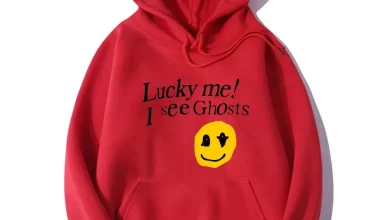
They all have a story, whether it’s a local/tribal tale like that seen in Maharashtra’s Warli paintings, or India’s major epics, like the Mahabharata and the Ramayana.
In contrast to all other printing forms, Bagru print and most Northwestern block printing styles do not convey tales. In Bagru’s designs, the material is crisscrossed with images that seem to float in the air. The sister style Daboo is also distinguished by the use of the Daboo resist method.
Daboo And Bagru
The early Bagru/Daboo prints were influenced by architecture and the surrounding surroundings. “Jaalis” – Mesh structures of Rajput architecture, are visible in several Bagru prints. Columns and jharokhas are other common emulations. Aside from the Mughal Empire, patterns were also influenced by consumer demand-as Arabic commerce developed, patterns were inspired by Arab designs, and British Raj patterns were inspired by European demand as the artform became more popular in Europe. This subcontinent’s history may therefore be traced back to the patterns of Bagru/Daboo.
The patterns of Bagru and its subset style, Daboo, are have influence from architecture, religion, and the environment, yet the two styles are distinct. Traditional Bagru is printed with wooden blocks, while in Daboo the whole cloth get color using a combination of mud (Daboo mud). This has the opposite effect of making the printed portions black.
Daboo mud is less viscous than dye, thus it distributes more easily over the cloth. Because of the lack of intricacy in Daboo Blocks, they are rather big and have a clear gap between designs to compensate. The technique of creating brighter and darker tones of the same colour via a succession of dying and resisting steps, which can cover later, adds even more depth.
It is difficult to categorise the patterns of Bagru since they are so diverse and so many of the patterns are exact copies of other forms, and this informality results in a million different designs. It’s clear that the style is really distinct from the rabble.
Bagru And Other Prints
Similar designs like Ajrakh and Sanganeri lack the simplicity and informality that identify Bagru patterns. Instead of thin lines, they showcase expanses of earthy and natural color. Also, the overlapping of repeating blocks and a lack of precision. When comparing the very detailed Ajrakh, a distinction may be detected. Because of its flawed forms and subdued colours, the fabric seems more accessible and open than the gold-infused polyester that dominates Indian markets. When one wears or sees the cloth, one feels as though they are linked to the ground they are walking on.
Bagru is a pattern of the people, not the aristocracy, and we love the simplicity and innocence and lack of gravity that it generates because of its use of everyday Indian life and simple, pure, natural colours and imperfections.
Fadat Print
Bagru’s non-Dabboo variation has a specific category of prints called Fadat. It derives its name after the traditional skirts. Fadat is a pattern type that you can see in other places. Each Fadat motif is less than a millimetre across, making it one of the tiniest designs in the world. One of his greatest achievements, Fadat, is awe-inspiring not just for the theme itself but also for the harmony created by a thousand different designs.
It is not only one colour or one layer of print that makes up the patterns of cloth. Each pattern block get separate by a backdrop block and an outline block that provides additional features on top of the primary pattern block. Most patterns have three colours and hence three layers.
Daboo
Handlooms, on the other hand, continue to entice buyers despite the industry’s decline. Famous as Indigo because of the colour, Daboo has become a staple in specialty block printing.
They are cheaper, simpler, monochromatic, and manufactured more quickly. Bagru prints made with the use of Daboo. It is a mud resist agent made from the peculiar “Daboo” mud. Further it involves other common household ingredients—are popular.
To comprehend Daboo’s distinctive style, it is essential to pay attention to the qualities of the mud combination. In comparison to the individual colours, the combination can withstand six to seven dyeing cycles. It is also less thick than the dyes individually.
Only a few designs can be design with the Daboo combination because of its unique qualities. Mud cannot take up delicate details, therefore they must be broad and thick to avoid blotching the cloth. There are big geometric patterns get inspiration from architecture like jaalis and jharokhas or large religious themes. It is also nature derive designs that are larger and less detailed.
Daboo’s capacity to withstand up to seven dye cycles allows for a unique design style. The monochromatic evolution of colours relies whether a print of Daboo put straight to white cloth or after a series of dying cycles. White, light blue, and medium blue prints on a dark blue backdrop are all possible for an Indigo Daboo print.
Conclusion
Bagru’s designs illustrate the history of the Indian subcontinent via their patterns. With bagru prints inspired by nature and architecture. They then get religious motifs as trade increases by the cultures of primary consumers. It does not matter whether nearby Mughals or distant Arabs, Egyptians or even Europe. And yet again in contemporary times of India and the increasing westernisation of the world showing glimpses of more quirky modern prints. Now fabric manufacturers in India are focusing on modern motifs.
If you are also looking for wholesale fabric suppliers then please do visit fabriclore. Fabriclore has a marvellous collection of beautiful bagru prints.



